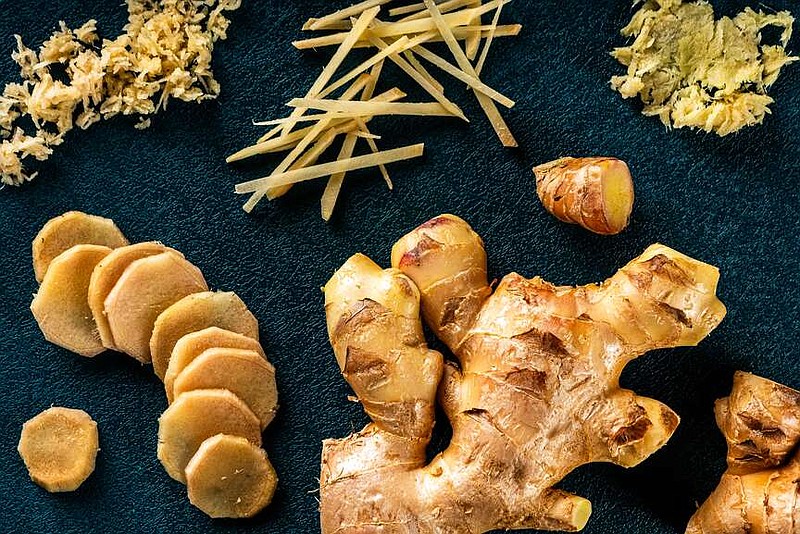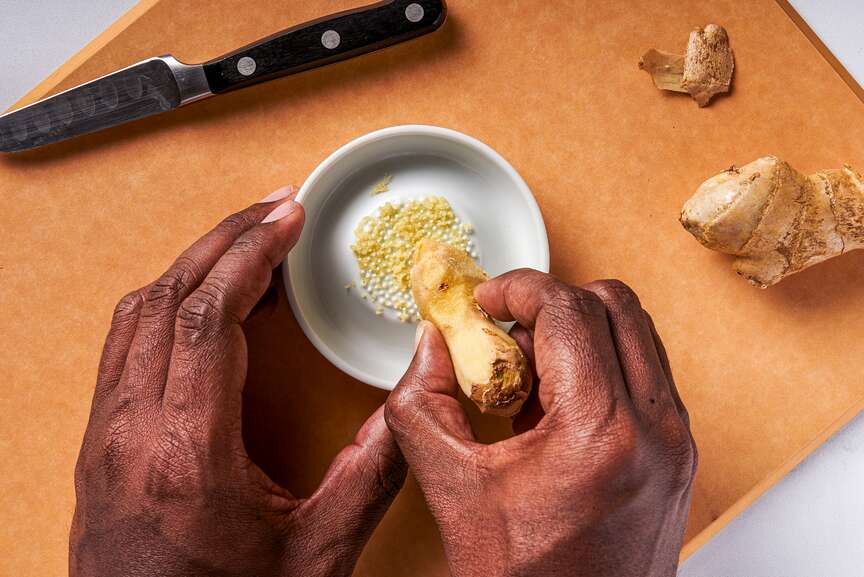Fresh ginger is small and humble, but what it lacks in appearance and grandeur, it makes up for in personality. A little of this homely root goes a long way. Just a teaspoon or tablespoon of fresh ginger will add its signature sharp flavor that boasts sweet, peppery and citrusy notes all at once.
Ginger makes an appearance in cuisines all around the world in a wide array of sweet and savory dishes. If you're ready to explore more ways to use it in your cooking, here's what you need to know about buying, peeling, grating and otherwise prepping this staple ingredient.
HOW TO BUY FRESH GINGER
Look for ginger root with smooth, not wrinkled, skin and "a fresh, spicy fragrance," advises "The New Food Lover's Companion" by Sharon Tyler Herbst and Ron Herbst. Avoid any pieces that are soft or moldy.
If you're shopping at a farmers market or Asian grocery store, you may come across baby, or young, ginger. "Immature ginger is off-white, rather soft and pliant, with rosy, undeveloped leaves called bud scales," my colleague Tim Carman wrote. "Baby ginger tickles your palate instead of assaulting it." Its lack of stringy fibers makes it a dream to work with, and there's no need to peel it either.
HOW TO STORE FRESH GINGER
Tightly wrapped, ginger can be refrigerated for up to 3 weeks, "The New Food Lover's Companion" says. Another option for refrigeration it recommends: Put peeled ginger in a lidded glass jar and cover with dry sherry or madeira. "The wine will impart some of its flavor to the ginger - a minor disadvantage to weigh against having peeled ginger ready and waiting." (Bonus: You can use the wine in cooking.)
My favorite storage method by far, though, is freezing, especially because I think frozen ginger is so much easier to work with. Plus, you don't need to worry about the root getting lost at the bottom of the produce bin and going bad. (Been there.) I cut the root into 1- or 2-inch pieces (peeled or unpeeled, up to you) and place them in a resealable bag, then freeze. It can be used right out of the freezer or after just a few minutes of thawing on the counter.
HOW TO PREP FRESH GINGER
It's best to trim the ends of ginger root before you use it, as they tend to be a little dried out. As to peeling, I prefer to use the edge of a spoon to scrape off the skin. You can use a knife, but odds are you'll take off more of the flesh than you want, and if you're working with a frozen chunk, you risk the blade slipping.
After that, you have a number of options: grating (more below), slicing into coins, mincing or cutting into matchsticks (julienne), depending on the recipe. Pay attention before you start cutting. "Ginger should be sliced against the grain because it has long fibers running through it lengthwise that can be chewy and stringy," says Megan Ginsberg at America's Test Kitchen. If you cut against the grain, perpendicular rather than parallel to the fibers, you cut those long fibers into more manageable pieces.
Some recipes may also have you crush pieces of ginger - use the side of the knife and a firm whack with the heel of your hand - that you will later remove.
How to grate fresh ginger
Especially if you're pulling ginger out of the freezer, grating it on a rasp grater, such as a Microplane zester, is a breeze. Ceramic graters are another preferred tool among some of my colleagues. Frankly, I've never had great luck using a box grater for ginger, regardless of the size holes I've tried.
HOW TO USE FRESH GINGER
Ginger root appears in a wide variety of global cuisines and dishes, whether savory or sweet. Its bold flavor makes it a standby, along with garlic and scallions, of the sauteed aromatic base you find in many Asian dishes, especially stir-fries. Cut into chunks or coins, it can infuse soup broth or a head-clearing tea when you're under the weather. Steep it in simple syrup for a throat remedy, drink mixer, or ice cream, pancake or fruit salad topping. Blend it into a punchy dressing to adorn greens or grilled proteins. Naturally, it's a staple in baked goods, often paired with dried ginger and sweet, chewy crystallized (candied) ginger.


